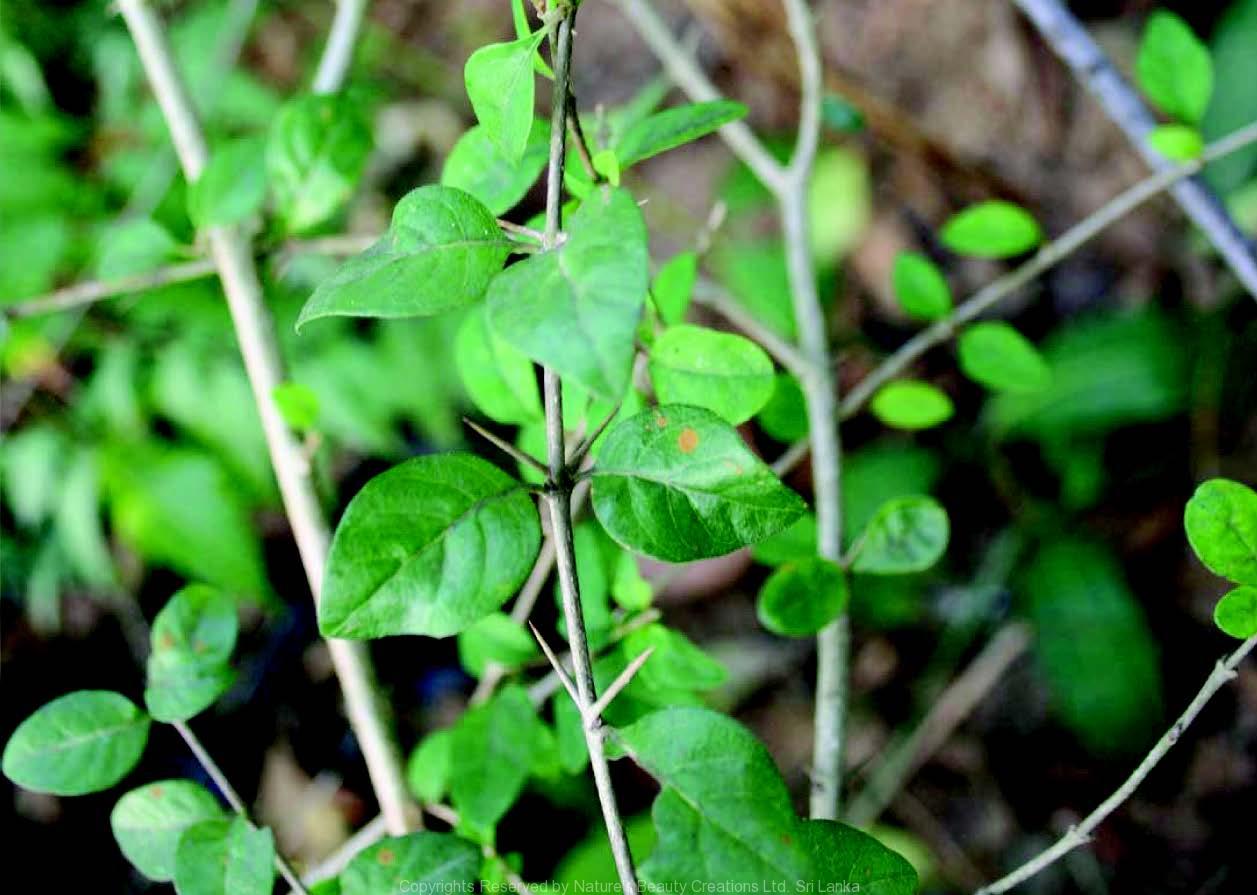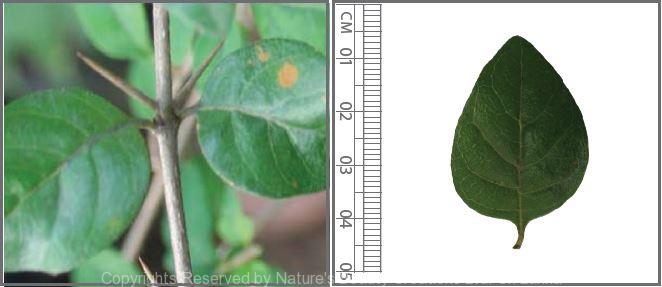

Traditional Knowledge
Useful plant parts :
Root, bark and fruit
Uses in traditional medicine :
- Powdered bark is applied for skin diseases
- Low doses of fruit pulp is given with bee honey to control parasitic nematodes in the stomach
- Root is used to treat diarrhoea and biliousness
- Fruit is emetic and used to treat snake bite poisoning
Scientific Research
Chemical constituents:
Coumarins: scopoletin, scoparone and secoisolariciresinol and dihydroisocoumarins and iridoid lactone: morindolide, lignans: pinoresinol, medioresinol, norneolignans: catunaregin, epicatunaregin, triterpene saponins: catunaroside E–H from stem bark
Bioactivity :
Catunaregin and epicatunaregin: anticancer; aqueous and alcohol extract of stem: sedative; methanol extract of fruit: hepatoprotective, bronchorelexant, anti-inflammatory, antioxidative
Clinical:
References : Gao, C. G. et al., (2010), Catunaregin and Epicatunaregin, Two Norneolignans Possessing an Unprecedented Skeleton from Catunare- gam spinosa, Helvetica Chimica Acta, 93, 339- 344. Gao, C. G. et al., (2011), Triterpenoid saponins from the stem bark of Catunaregam spinosa, The Canadian Journal of Chemical Engineering, 89, 1277-1282. Ghante, M. H. et al., Bronchorelaxant, mast cell stabilizing, anti-inflammatory and antioxidant activity of Randia dumetorum (Retz.) Lamk, extracts, Acta Pol Pharm, 69(3), 465-74. Guangchun, G. et al., (2008), Minor compounds from the stem bark of Chinese mangrove associate Catunaregam spinosa, 63(7), 542-544. Madhavan, V. et al., (2011), Sedative activity studies on the aqueous and alcohol extracts of the stem bark of Madanaphala – an ayurvedic drug (Catunaregam spinosa (Thunberg) Tiruvengadam), Asian Journal of Traditional Medicines, 6(5), 203-210. Noorani, A. A. and Kale, M. K., Pretreatment of Albino Rats with Methanolic Fruit Extract of Randia dumetorum (L.) Protects against Alcohol Induced Liver Damage, Korean J Physiol Pharmacol, 16(2), 125-30.
Copyrights Reserved By
Natures Beauty Creations




